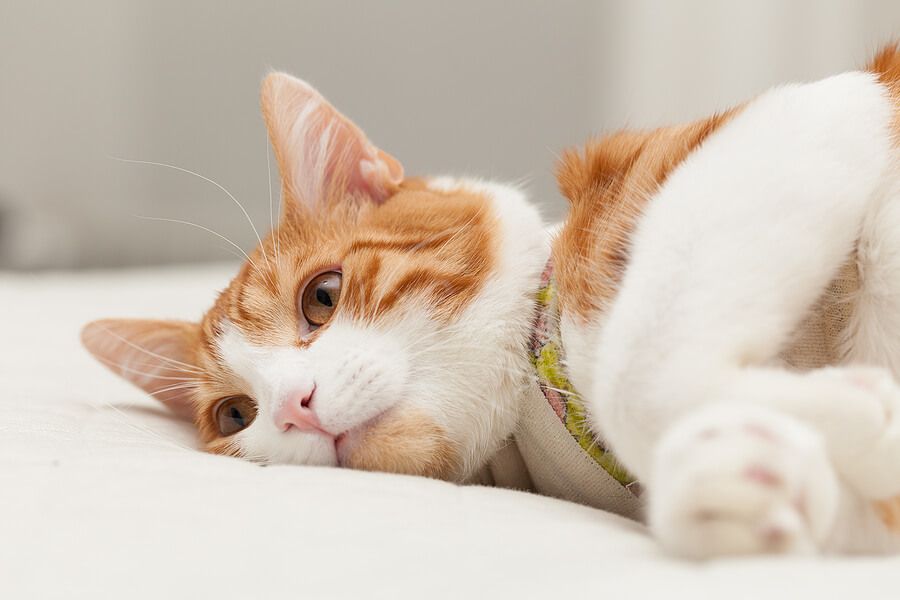How to Determine if Your Cat's Leg is Broken or Sprained: A Guide to Spotting Feline Injuries
As a cat mom/dad, you want to give your feline friend the best life possible, including ensuring maximum safety. Whether you are a home cat or love the outdoors, accidents are unpredictable for this curious creature. They often get themselves in potentially dangerous situations that sometimes injure their delicate limbs.
While this is not always preventable, you can always be careful and note down any unusual changes. We've gathered some key information below to help you understand the situation and take immediate action accordingly.

Let's start with -
How to Tell if Your Cat's Leg Is Broken or Sprained
As accidents occur, your cat starts acting differently depending on the severity of the injury. The signs include lethargy, limping, licking a certain spot, growling, etc. Your loving pet might show signs of pain or discomfort.
At this point, you're worried and perhaps desperately googling, "How to tell if my cat is in pain?" However, before taking any random decision, you must determine whether your cat has sprained or broken leg. And as soon as you understand the condition, you can quickly secure the right treatment for your cat.
A sprained leg might require bandages, but you must rush to the vet as soon as possible for a broken leg. The vet could suggest surgery for a complex fracture.
Some Common Cat Sprained Leg Symptoms include:
Your cat might show these symptoms when it has a sprained leg-
Crying or meowing after getting hurt
Showing a lack of appetite
Favoring the injured leg
Couldn't use the injured limb
Panting
Swelling of the injured limb
Personality changes when touched
Now,
How to Tell if Your Cat's Leg Is Broken?
It's not that easy to spot a cat's broken leg. Because both bone-breaking or sprained cases show similar signs of pain, swelling, and limping, but a few differences can help you differentiate the actual case:
Pain Level is Higher in Broken Leg: Broken legs cause more pain than spraining them. If you notice your cat is crying out in pain or showing a painful reaction when you touch it, it might be experiencing a broken bone.
Bruising and swelling: Broken legs often display bruises or visible swelling. Be alarmed if you notice these because there may be a possibility of fracture.
Deformed Leg: You might notice changes in the cat's leg alignment. For example - an unusual form, shorter than the other, bent at a certain angle, etc. Such symptoms indicate major injury, and it's severe enough for you to get medical attention.
Difficulty in Bearing Weight: If your cat has a sprain, it will be tough to bear weight. But with a broken leg, it's almost impossible to bear any weight.
How to Treat Sprains in Cats?
Visiting a vet when you suspect a broken leg or sprain is recommended. The vet might perform a physical exam on your cat and do X-rays to determine the extent of the injury. They may also try a tentative diagnosis or joint tap. After the diagnosis, your vet would prescribe the initial treatment.
However, to reduce the swelling and pain, your cat needs to put the leg to rest. Prepare a small area in the house or get a cage. If your cat is restricted in an enclosed space, the injured limb can heal with enough rest. Physical therapies also provide great scope for fast improvement.
Good to know
The most common question regarding a cat's sprained legs is - can a cat sprain heal on its own? Well, it depends on the type of spraining it has. A Grade 1 leg sprain is considered mild and heals on its own. Grade 2 & 3 leg sprains take longer to heal and require veteran treatment.
Cat sprained leg recovery time ranges from about two weeks. But if the cat roams outside and is not restricted at home, the recovery takes longer as this can worsen the injury.
Prescribed non-steroidal anti-inflammatory medications could help reduce the pain and heal your injured leg by reducing inflammation.
However, the treatment your cat receives entirely depends on the grade of leg sprain. The vet might prescribe a splinting of the injured limb for a Grade One sprain, which could take several weeks to recover and heal.
And grade two sprains take the longest to recover. The treatment might include anti-inflammatory medications, splinting, and often surgery. Sprain recovery could take several months in grade three when surgery is needed.
Taking Care of Your Cat with an Injured Limb
Once the veterinarian prescribes treatment, you must prepare at home to recover your cat faster.
Restricting the cat's movement is a must. If a splint is used on your cat, keep it clean and dry. Ensure the splint's edges don't rub and irritate your cat's sensitive skin.
When your cat is restricted, the vet might prescribe supplements and remedies with medications. No matter what remedies or supplements you're giving to your cat, it must be verified by your vet.
What's Next?
Make sure you're providing your cat's medications as the vet instructed. Also, don't forget to check with your vet for follow-up appointments and verify your cat's recovery.
Forever Vets can be your destination if you're looking for a reliable vet to treat your injured cat. We offer various veterinary services, from preventive care to emergency procedures. Schedule your appointment at Forever Vets to get your cat checked by an experienced vet at a reasonable cost.
FAQ:
1. How can I tell if my cat has a leg injury?
If your cat is limping, avoiding putting weight on a leg, or showing signs of pain (such as vocalizing, hiding, or excessive licking of the area), it may have an injury. Swelling or an unusual stance can also indicate a problem.
2. What are the signs of a broken leg in a cat?
A broken leg typically causes severe swelling, extreme pain, and an inability to bear weight. The limb may appear deformed or bent at an unusual angle. In some cases, you may hear a grinding sound when the leg is moved.
3. How do I know if my cat's leg is sprained rather than broken?
A sprain is generally less severe than a fracture and may cause limping, mild swelling, and tenderness. Unlike a break, the limb should not look visibly deformed, and your cat may still be able to put some weight on it.
4. Can I check my cat's injury at home?
You can carefully observe your cat's behavior and gently examine the leg without forcing movement. If your cat reacts with severe pain, has swelling, or the leg looks unnatural, avoid further handling and seek veterinary attention.
5. What should I do if I think my cat has a broken leg?
Keep your cat calm and restrict movement to prevent further injury. Place your cat in a secure carrier and seek veterinary care immediately for an X-ray and diagnosis.
6. How is a sprained leg treated?
Most sprains heal with rest, limited movement, and sometimes pain medication prescribed by a vet. Preventing your cat from jumping or climbing can help speed up recovery.
7. How are broken legs treated in cats?
Treatment varies depending on the severity of the fracture. Minor fractures may require a splint or cast, while severe breaks may need surgery with pins or plates to stabilize the bone. Pain management and limited activity are crucial for healing.
8. Will a cat's broken leg heal on its own?
No. A fractured leg needs veterinary care to heal properly. Without treatment, the bone may heal incorrectly, leading to long-term pain, mobility issues, or even infection.
9. How long does it take for a cat's leg injury to heal?
Sprains: 1-3 weeks with proper rest.
Fractures: 6-12 weeks, depending on the severity and treatment method.
10. How can I prevent my cat from injuring its leg?
To reduce the risk of injuries, keep your cat indoors or supervise outdoor time, provide safe climbing structures, and maintain a healthy weight to avoid joint strain.


